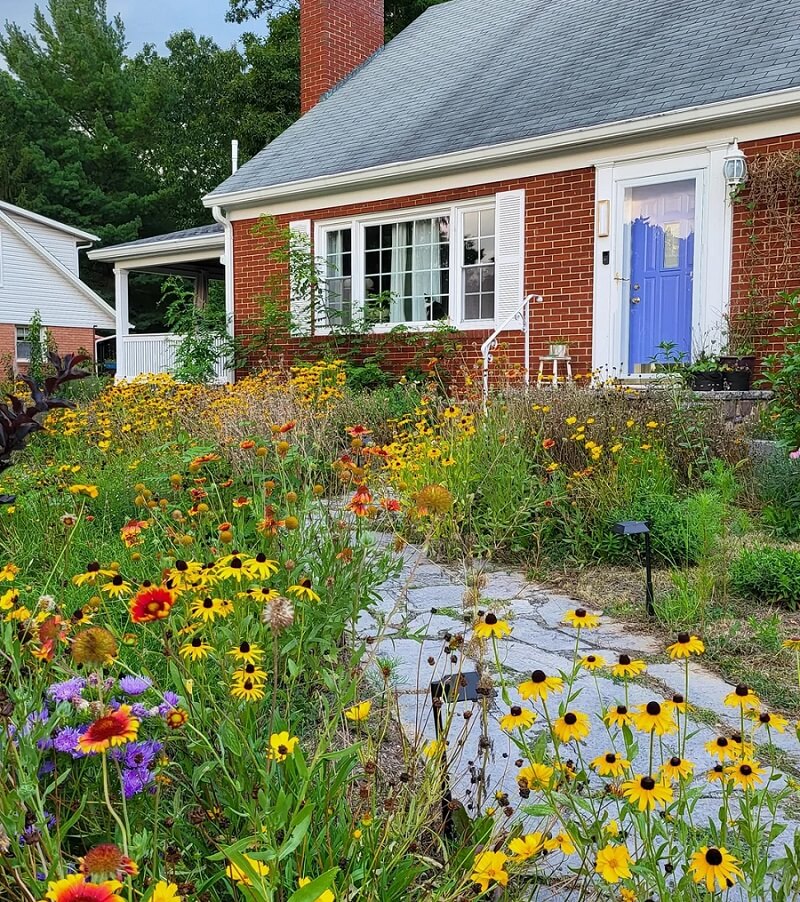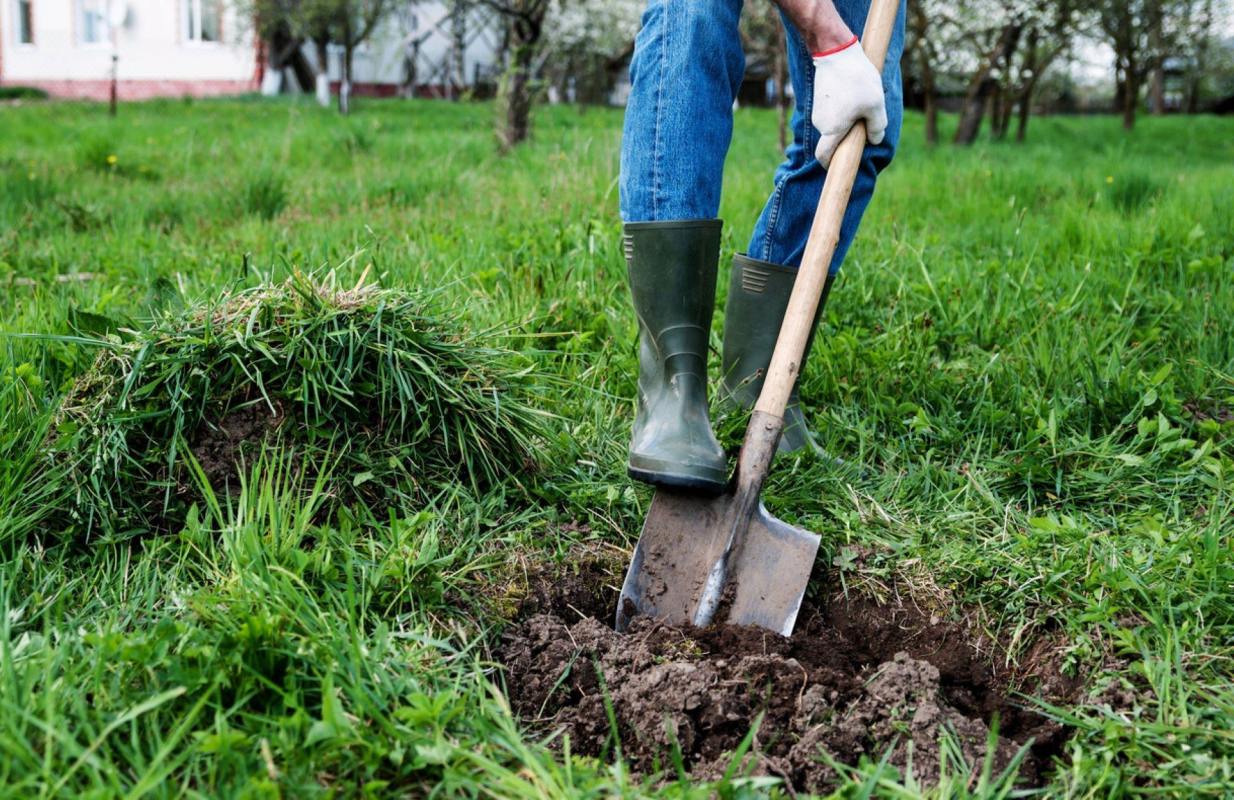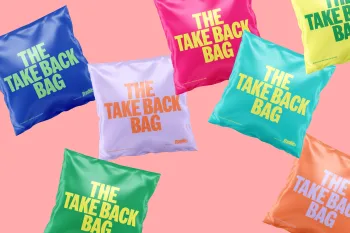We can style our homes in ways that suit our interests and personality — and extend that practice to our front lawns as well.
A Redditor demonstrated their interest in creating a vibrant and colorful front lawn by posting photos on r/NoLawns, enjoying the results of bringing their wildflowers to life.


Managing a home lawn can take patience and discipline. The first step is recognizing what doesn't work. By taking the initiative to plant and promote the growth of native plants, homeowners can reap the benefits, both for biodiversity and their property value.
"It has been a fun experiment that has brought us so much joy," the OP said, excited for what they had created.
The first photo highlighted a primarily yellow assortment of wildflowers bordering a stone pathway that led up to the bright blue door of the OP's home. The following photos showcased the wildflower lawn from other angles, emphasizing how expansive this native plan lawn had become.
"We planted a few quart-size plants last year like Stokes Aster, New England Aster, yarrow, and some milkweed. The rest is from many different wildflower seed packets," the OP shared, giving a glimpse into the variety featured on their front lawn.
Native plants, such as the wildflowers discussed here, offer multiple benefits, including saving homeowners money on their water bill. According to a discussion on NPR, native plants require less fertilizer, prevent flooding, and reduce the amount of harmful pollutants in the air. These positives have prompted cities and homeowners associations to work with homeowners who use native plants as a lawn replacement, even if just partially.
More than 70 million people live in communities governed by HOAs, including 84% of those who lived in new, single-family homes in 2022, according to the U.S. Census Bureau. Today, low-maintenance lawn replacement options have gained momentum. These include clover, buffalo grass, and xeriscaping, which all are drought-tolerant, reduce spending on mowing, and attract pollinators to encourage biodiversity.
Pollinators contribute much to our food systems, as bees, flower flies, and butterflies pollinate over 85% of wild flowering plants and over 75% of agricultural crop species, according to Sustainable Woodstock. Native plant lawns made of wildflowers, for example, support both the homeowner and surrounding habitat.
The post received many upvotes and comments, with one user writing: "Beautiful! Well done!"
Another added: "I thought this was a painting. It's just lovely."
Join our free newsletter for easy tips to save more, waste less, and help yourself while helping the planet.









